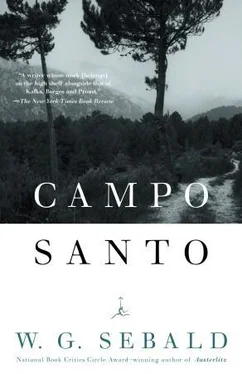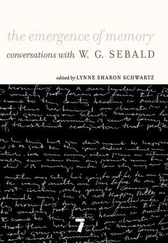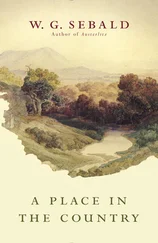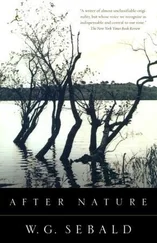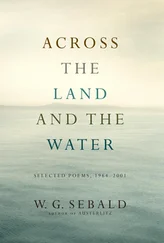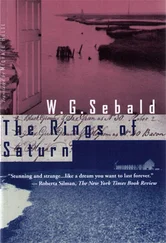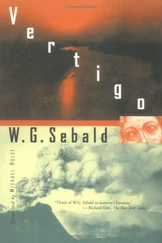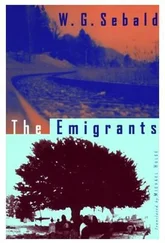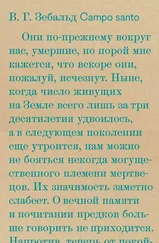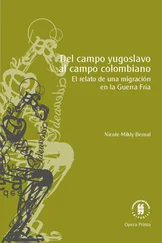However, the other dimension of the Saturnian circumstances responsible for melancholy does point, as Benjamin has said and in the context of the heavy, dry nature of that planet, to the type of man predestined to hard and fruitless agricultural labor. 40It is probably no coincidence that the narrator’s only utilitarian occupation seems to be growing herbs. He sends these herbs, dried and in carefully adjusted mixtures, to various delicatessens in Milan and Amsterdam as well as to Germany, to Hamburg and Hannover. Perhaps they bear the words “Rosemary, that’s for remembrance” written in Ophelia’s hand. 41
The Ideal of Lightlessness
This last, tenuous connection with the outside world also expresses the wish for a progressive and gradual removal from the society of mankind. It is complemented by a tendency toward dematerialization that in the text has its symbolical counterpart in a painting — a work that ranks very high in the narrator’s estimation — so dark and black “that it gives not the slightest idea of what it may once have shown.” 42The “ideal of blackness” of which this picture, signed by one Jean Gaspard Muller, is an example, is, as Adorno remarked in his Ästhetische Theorie , “one of the deepest impulses of abstraction.” 43To follow that impulse, to reach a place “where no star, no light is visible, where there is nothing, where nothing is forgotten because nothing is remembered, where it is night, where it is nothing, nothing, void,” is the deepest emotion to move the narrator when, in the darkness, he explores the spaces between the stars with his telescope. 44
But as the narrator well knows, the search for the ideal of absolute lightlessness remains a hopeless undertaking, for the more he reduces the angle of his lens to exclude the stars still perceptible in his field of vision, the farther he sees into the depths of space from which heavenly bodies previously darkened by distance now shine out. Here, then, we are dealing with something far from nihilism in the usual sense of the word; it is more like an approximation to death, that black point which, in the narrator’s imagination, is always becoming “blacker and thicker, ever thicker and ever longer,” and to which his melancholy clings like “the fat weed / that roots itself in ease on Lethe wharf,” a provocative gesture of resignation. 45
Melancholy, of all entities, will make no pact with death, for it knows him as “the most gloomy representative of a gloomy reality” and therefore, like the traveler who, at the beginning of The Castle , voluntarily crosses the bridge into unsurveyed country, speculates on whether death might not be vulnerable to an invasion of his own territory. 46
The area that melancholy thus sets out to explore stretches out before us in The Castle as a snowy, frozen landscape, and its exact counterpart is Tynset, a place in the north of Norway that the narrator ventures to visit. Tynset is the penultimate stage on his journey. After it comes Röros, which “[lies] like a last camp on the way to the end of the world, before that way is lost in inhospitable regions, a territory so incalculable, so menacing, that its exploration has been postponed year after year, until the camp has become eternal autumn quarters inhabited by aging explorers who have lost sight of their goal; have forgotten it, and now look vaguely for the geographical origins of a melancholy … that they have long been seeking, but on which they can never lay hands.” 47
The Cold Mamsell
The inhospitable region that the melancholy disposition adopts as its home in this reflection is its idea not just of the anteroom of death, but also of the place where we are all continually entertained by a sinister lady who, as Hildesheimer confided to his friend Max in a recently published letter, regularly awaits us after midnight. She is “the cold Mamsell,” a name accurately denoting her profession, similarly remembered by Grass in evoking Dürer’s Melencolia . Among her avocations — as Hildesheimer describes them with some malice — are rolling up salami slices and wrapping cold asparagus in strips of ham, arranging olives on savory breadsticks, slicing cheese thinly, cutting gherkins into fan shapes, carving tomatoes into eighths and radishes into water lily shapes, splitting onions into rings, and laying cubed brawn on platters and sliced cold meats on a bed of lettuce. So that Max will know just who he is dealing with, Hildesheimer adds to this description: “You see, she comes from Germany. In line with her name, she is rather cold, especially her shoulders.” 48
If anyone needs further information to identify this lady, let us add that we are already familiar with one of her sisters-in-law from Kafka’s novel quoted above; she keeps house in the castle and “it is usually cold in castles and always winter / for the sun of righteousness is far from them … so courtiers shiver with cold, / fear and sadness.” 49That sister-in-law of the Cold Mamsell who presides over this drafty place can boast several chests of grand dresses, and whenever she, this Madame la Mort, goes to fetch someone she has a new one made, which she then adds to those already in her wardrobe, and consequently she also gives the surveyor the opportunity of entering her service as a tailor: a compromising offer, which in view of his own mission he must decline.
Des Häschens Kind, der kleine Has (The Little Hare, Child of the Hare): On the Poet Ernst Herbeck’s Totem Animal
Most of the recent literature we persist in reading seems inane only a few years later. Or at least, and so far as I am concerned, very little of it has stood the test of time as well as the poems written by Ernst Herbeck from around 1960 onward in his mental hospital in Gugging.
I first came upon Herbeck’s eccentric figures of speech in 1966. I remember sitting in the Rylands Library in Manchester reading a work on the calamitous Carl Sternheim, and every now and then, as if to refresh my mind, picking up a little volume published by dtv, Schizophrenie und Sprache (“Schizophrenia and Language”) and finding myself amazed by the brilliance of the riddling verbal images conjured up, evidently at random, by this most unfortunate of poets. Today, such sequences of words as Firn der Schnee das Eis gefriert (“Firn the snow the ice freezes”) or Blau. Die Rote Farbe. Die Gelbe Farbe. Die Dunkelgrüne. Der Himmel ELLENO (“Blue. The Red Color. The Yellow Color. The Dark Green. The sky ELLENO”) still seem to me to verge on the frontiers of a breathless other world.
Again and again passages of slight distortion and gentle resignation remind one of the way in which Matthias Claudius sometimes manages, with a single semitone or pause, to induce a momentary feeling of levitation in the reader. Ernst Herbeck writes: “Bright we read in the misty sky / How stout the winter days. Are.” There is probably no greater sense of both distance and closeness anywhere in literature. Herbeck’s poems show us the world in reverse perspective. Everything is contained in a tiny circular image.
It is astonishing that over and beyond his own poems Herbeck also gave us a theory of poetics in a few statements of principle. “Poetry,” he writes, “is an oral way of shaping history in slow motion.… Poetry is also antipathetic to reality, and weighs more heavily. Poetry transfers authority to the pupil. The pupil learns poetry; and that is the history in the book. We learn poetry from the animal in the woods. Gazelles are famous historians.”
Ernst Herbeck, who spent most of his life in a psychiatric hospital, hardly knew the contemporary history of Austria and Germany at first hand, but he remembered Adolf Hitler as Reich Chancellor, the enthusiasm with which Vienna received him, and other festive occasions of the past. A Christmas poem not only mentions the inevitable snow and lighted candles, but contains references to banners, warfare, and downfall.
Читать дальше
